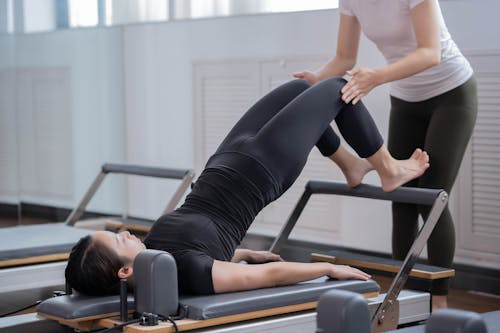
The Enormous Impact Exercise Has On Cognitive Abilities
When you’re moving, form matters! When you’re moving under load, like during your workout, it matters even more! So what constitutes good form, exactly? Today’s blog focuses on posture and what it means in fitness.
An ideal, healthy posture is neutral and balanced. When viewing your body from front and back, an imaginary straight line of gravity would pass through your centre, with symmetry of the limbs on either side.
Side on, this means the middle of your ankles, hips, ribs and ears will be in line with each other if you were to draw a line from your ear to ankle.
Keeping Your Bones Aligned
At its simplest, good alignment means putting your bones in the right place. When your bones are aligned properly, no single joint will be subject to more than its share of the load.
Avoiding overloading of the joints is proven to prevent injury and while moving with resistance, aligned bones help you to strengthen muscles in a balanced and complementary manner.
Poor posture can hasten fatigue, put more stress on ligaments, and even affects your rate of respiration. These are all negatives when it comes to your work out.
Posture Types
There are a variety of posture types, and even as an individual you may share elements of a few or switch between them over time.
You may have:
- kyphosis (hunchback)
- Lordosis (hyperextended lower back)
- Flat back
- Sway back
Knowing your posture type before you begin a new training regime provides valuable input into the types of exercises that best suit you.
For example, you might need to focus on strengthening hip and neck flexors to better support your lower back and address a sway back. Get your trainer to help you with a postural assessment before you begin.
Maintaining Posture During Exercise
Once you learn how it feels to stand and adjust yourself into an optimal and healthy posture, the next step is to integrate all of this neutral positioning into movement.
After all, many of us can stand tall while actively thinking about ‘good posture,’ but can you maintain it during your workout? Your trainer will give you instructions during your workout about how you can better complete various exercises.
This is known as cueing and is a great way to improve your posture through ‘doing’ or what’s known as motor learning.
Listen carefully to their cues and try to adjust your movement. It’s ok to stop to ask for clarification if you’re not sure what they mean, but we’ll be onto you if you use it as a stalling tactic to avoid a few extra reps!

Find Creative Ways To Remind Yourself
And finally, keep that postural awareness going in everyday life. Some people use a reminder app to prompt them to ensure they’re keeping themselves in a better biomechanical position, whether walking, sitting or lifting.
However, once your body adapts to finding that optimal, neutral position, your body adjustments occur without you consciously thinking about them, and your core and spine will thank you!
So whether you’re a devotee to Pilates in Chadstone or spin class mad in Mentone, stand tall and learn to move better!




